Understanding cGMP Experience: What Is That?
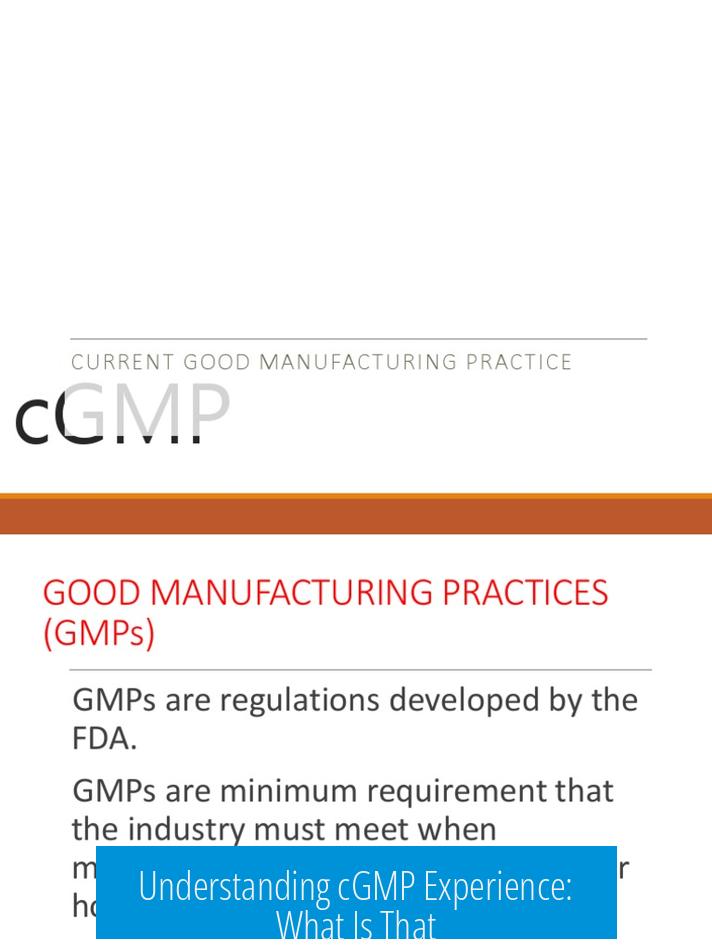
cGMP experience refers to practical knowledge and application of Current Good Manufacturing Practice standards primarily in pharmaceutical and related industries. These standards ensure products are consistently produced and controlled to quality standards appropriate for their intended use. “Current” emphasizes adherence to the latest regulations and best practices.
Definition and Meaning of cGMP
GMP stands for Good Manufacturing Practice, a set of guidelines governing production and quality systems in pharmaceuticals and similar sectors. The prefix “current” (cGMP) signals that these practices incorporate the most recent legal and scientific requirements.
In essence, cGMP covers the necessary behavior, processes, and documentation for manufacturing products intended for sale, emphasizing product safety and quality.
Regulatory Framework
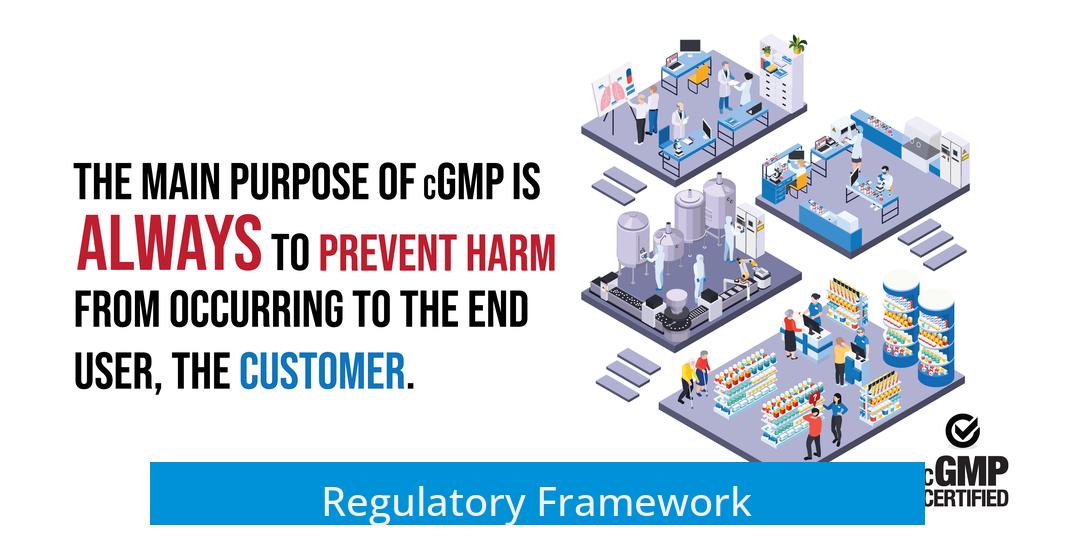
Regulations for cGMP are enforced through legal documents such as CFR21 (Code of Federal Regulations Title 21) in the US and Eudralex Vol.4 in the EU. These official sources describe minimum standards for production, hygiene, documentation, and quality control.
The FDA provides extended guidance documents for specific industries and practices, supplementing the core regulations.
Purpose and Application
- Ensure consumer safety by preventing harm from contaminated or substandard products.
- Control hygiene in manufacturing environments.
- Manage chemical waste and environmental impact.
- Maintain thorough and accurate documentation of manufacturing processes.
cGMP adapts to different industries, applying principles relevant to pharmaceuticals, agriculture, and other sectors requiring strict quality management.
Industry Variability and Learning cGMP
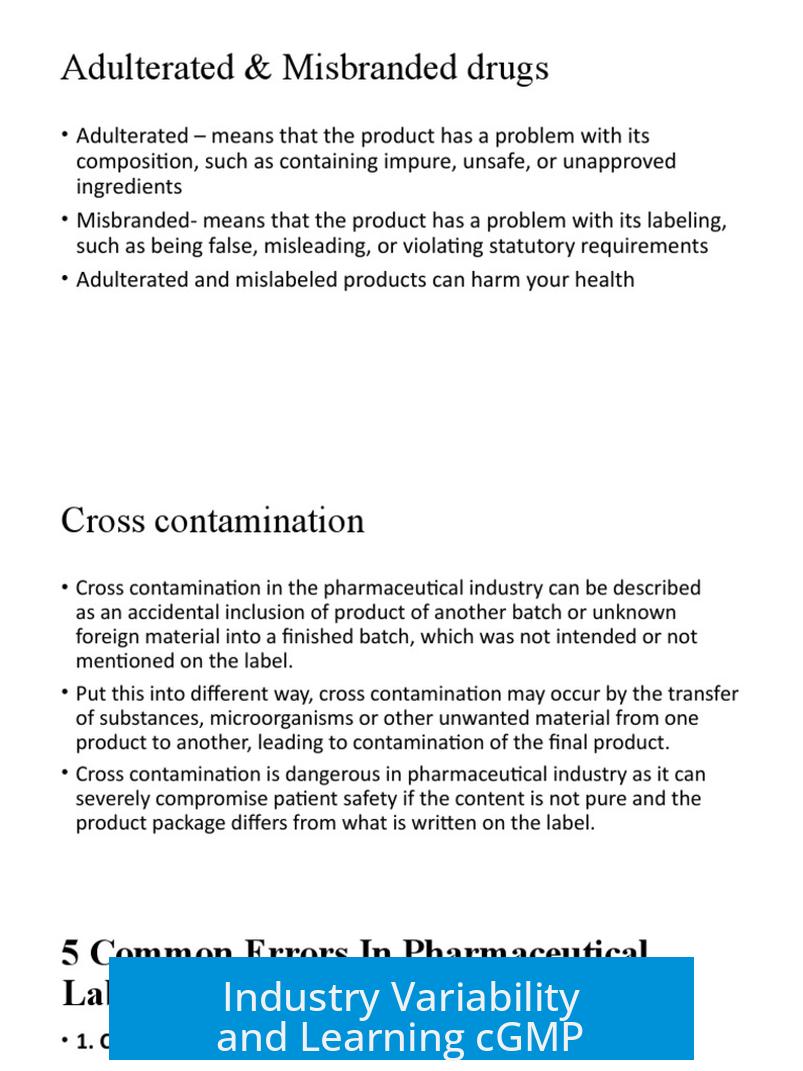
The requirements and implementation of cGMP can vary based on the specific industry sector. For example, pharmaceutical manufacturing has stricter and more complex standards than agricultural product processing.
Experience with cGMP is typically gained through hands-on work in regulated environments. Employers often look for prior engagement with these practices but also provide training tailored to the company’s processes. Real-world application is the most effective way to understand and comply with cGMP.
Common Misunderstandings
Some may confuse GMP or cGMP with unrelated terms, such as the nucleotide guanosine monophosphate. However, in manufacturing contexts, cGMP always refers to regulatory standards for quality and safety.
Related Standards
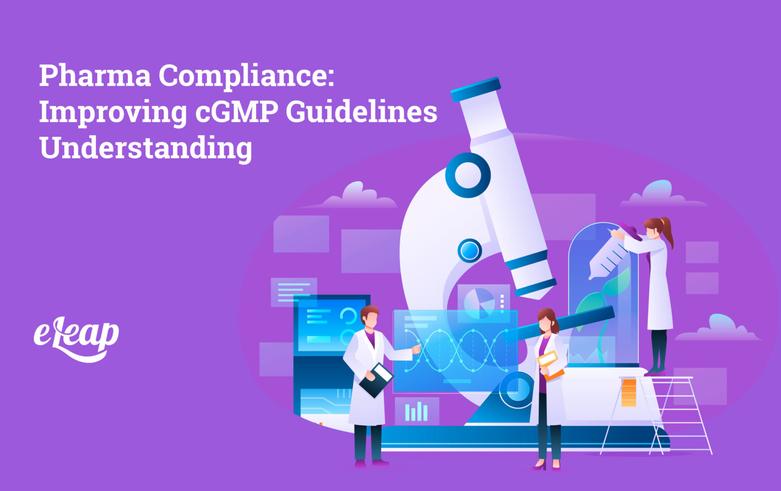
ISO 17025 is another standard often mentioned alongside cGMP. It focuses on the competence of testing and calibration laboratories rather than production itself. While relevant to quality assurance, ISO 17025 addresses laboratory operations more than manufacturing processes.
Key Takeaways
- cGMP means Current Good Manufacturing Practice, ensuring safe, high-quality products.
- It is codified in legal regulations like CFR21 (US) and Eudralex Vol.4 (EU).
- Practical cGMP experience involves following documented procedures and hygiene practices.
- Standards vary by industry, mainly pharmaceutical and agriculture.
- Hands-on experience in regulated environments is essential to learn cGMP.
- cGMP is about quality assurance, not chemical substances.
- Related standards like ISO 17025 apply mainly to laboratory testing.
cGMP Experience? What Is That?
Simply put, cGMP means current Good Manufacturing Practice. It’s the set of strict rules and behaviors that manufacturers must follow to ensure their products are safe, high-quality, and fit for consumers. If you ever wondered why your medicines don’t turn into strange potions, cGMP is a big reason.
Let’s break this down to get a clearer picture. GMP stands for Good Manufacturing Practice—essentially guidelines for how products, especially pharmaceutical ones, are made. Now, the added “c” just means “current.” The FDA loves this tiny letter because it reminds manufacturers these rules must be up to date. Ironically, saying “current GMP” is a bit like saying “new new jeans”—a little redundant but standard jargon.
Think of cGMP as a recipe book, but instead of just listing ingredients and steps, it includes how clean your kitchen is, how to label your jars, and how to make sure you’re not accidentally mixing sugar with salt. It’s about behavior, documentation, and systems to keep everything consistent and safe.
cGMP: The Legal Backbone
Now, don’t confuse cGMP with some random buzzword—it’s rooted in legal frameworks. In the US, these live in CFR21 (Code of Federal Regulations, Title 21). In Europe, they’re in Eudralex Volume 4.
These documents act like a blueprint. The FDA website also offers tons of detailed guidelines that explain how to apply these rules to specific products—kind of like cheat sheets for compliance.
Without this legal framework, companies might treat manufacturing like “winging it” in the kitchen. Instead, these regulations make “winging it” a very bad idea, ensuring that consumers don’t end up with contaminated or ineffective meds.
The Purpose of cGMP: Why Care?
At its core, cGMP’s goal is consumer safety. That means everything—from sterilized equipment, to proper chemical waste disposal, to thorough documentation—is designed to prevent harm.
Imagine if your medicine was made in a sloppy environment: that could cause serious health risks. cGMP ensures hygiene, protects against contamination, and keeps track of every step in manufacturing. No corners cut, ever.
Behavior plays a huge role here. It’s not just about having the right machines or ingredients but about *how* you act, document, and verify your work.
Industry-Specific, Not One-Size-Fits-All
Here’s a curveball: cGMP doesn’t look exactly the same everywhere. Its exact rules depend on the industry and product. For example, pharmaceutical cGMP focuses a lot on sterilization and chemical purity.
Meanwhile, the FDA also issues GMP guidelines for agriculture, cosmetics, and other industries. Imagine them as distant cousins sharing family habits but cooking different meals.
In labs, you might also hear about ISO 17025. It’s related but focuses on lab competency and sample analysis rather than manufacturing safety.
What Does cGMP Experience Mean?
Employers often want you to have “cGMP experience.” This means you’ve worked in a setting where these practices weren’t just buzzwords but daily routines. You know how to handle chemicals properly, document every step, and follow hygiene protocols.
The best way to gain this? Dive into pharmaceutical or regulated manufacturing roles. Experience teaches you the nuances—like why a misplaced comma in documentation can lead to big headaches or why certain waste streams must be handled differently.
Don’t worry if you don’t know everything upfront. Most employers will coach you, but showing familiarity with cGMP tells them you can fit into their safety-minded culture.
Common Misunderstandings: What cGMP Is NOT
Confession time: many newcomers get mixed up. Someone recently confused cGMP with guanosine monophosphate—a tiny molecule in DNA. Spoiler: cGMP experience isn’t about biochemistry trivia, it’s about manufacturing discipline.
Another hiccup is thinking cGMP is universal—one size fits all. Nope! Different jobs and companies have their own twists on it. So, having “cGMP experience” in one sector might not mean you’re fully set for another without some adaptation.
Why Should You Care About cGMP?
If you’re curious about working in pharma or any regulated manufacturing, understanding cGMP is crucial. It’s the foundation of product safety and quality. Plus, it sets you apart in the job market.
Manufacturing without cGMP is like flying a plane without a checklist. Dangerous and unwise.
Curious how cGMP might look in your dream job? Check job listings carefully, and don’t hesitate to ask about their specific expectations. Many companies see it as a mindset as much as knowledge.
In Summary
- cGMP means current Good Manufacturing Practice—rules and behaviors to ensure product safety and quality.
- It’s legally backed by CFR21 in the US and Eudralex Vol. 4 in the EU.
- The main goal is to protect consumers from harm through hygiene, documentation, and proper chemical handling.
- It varies by industry; pharma cGMP is different than agricultural GMP, but the core principles align.
- Experience working under cGMP often means hands-on practice in controlled manufacturing environments.
- Don’t mistake it for unrelated terms or think it’s universal—context matters.
So next time you see “cGMP experience required,” remember: it’s less about magic formulas and more about doing your job the right way, every time. It’s the quiet hero behind safe medicines and products you trust daily.
What does cGMP stand for and mean?
cGMP means current Good Manufacturing Practice. It represents rules for making products safely in industries like pharmaceuticals. The ‘current’ part just means the rules are up to date with regulations.
Why is cGMP important in manufacturing?
cGMP ensures products are made safely to protect consumers. It covers behavior and recordkeeping needed to make items that can be sold without harm.
How is cGMP regulated?
cGMP rules come from legal texts like CFR21 in the US and Eudralex Vol.4 in the EU. The FDA provides detailed guidelines on how to follow these rules.
Does cGMP apply the same across all industries?
No, cGMP varies by industry. For example, pharmaceutical manufacturing follows strict cGMP, while agriculture may have different guidelines under the FDA.
How can one gain cGMP experience?
The best way is by working directly in pharmaceutical or related manufacturing jobs. Employers often coach new hires on how cGMP applies to their tasks.


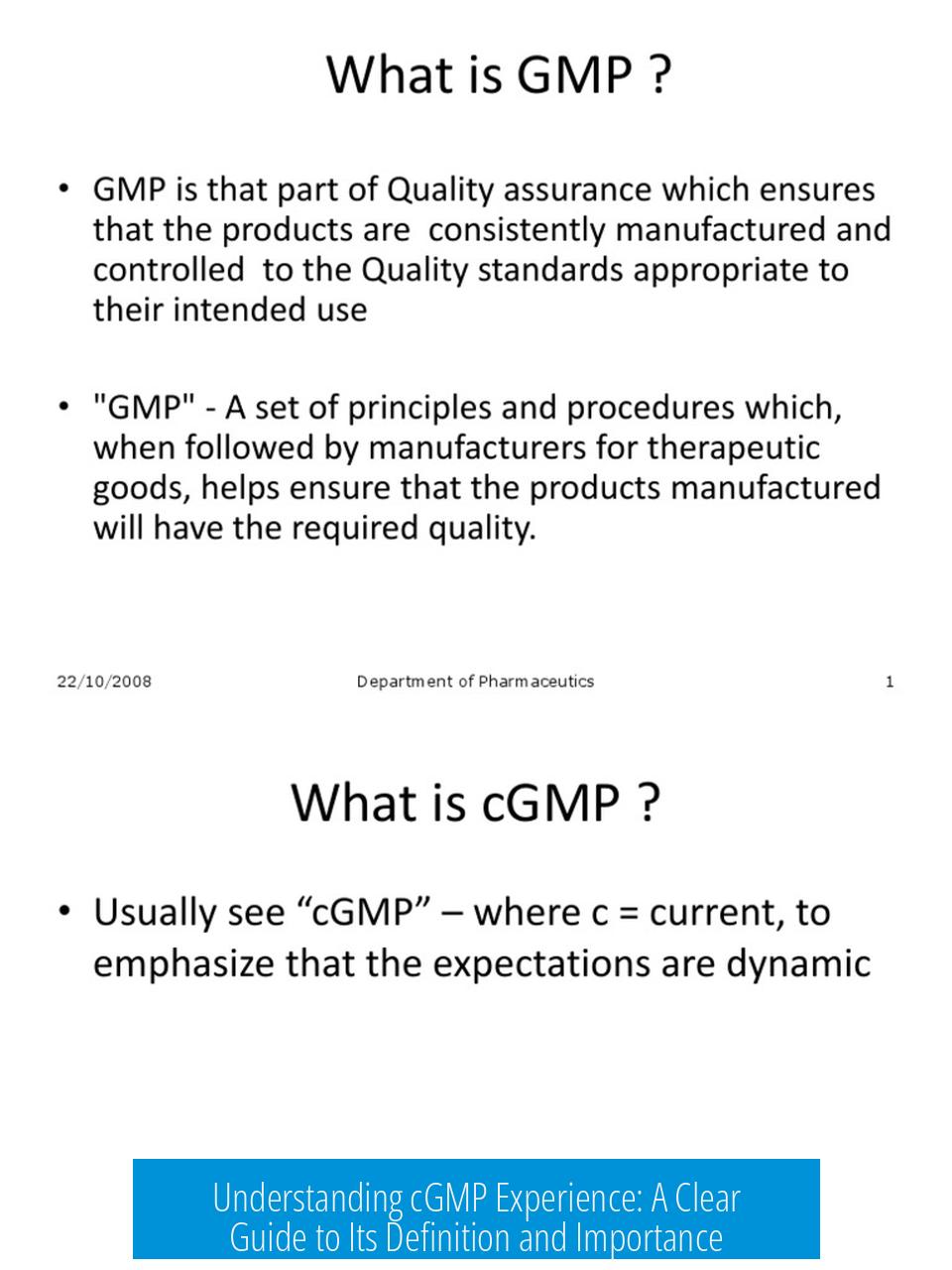


Leave a Comment